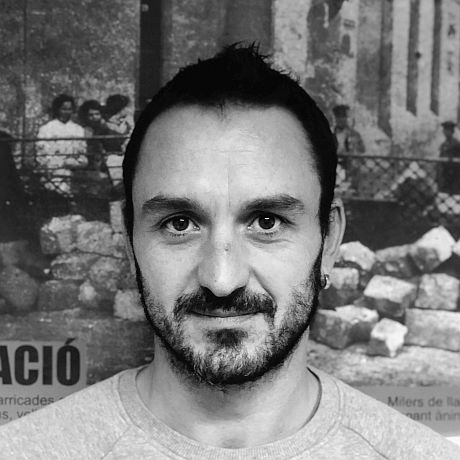The revolution of the ‘nameless’
- Books
- Culture Folder
- Feb 20
- 3 mins

The images compiled in the book illustrate an imaginary of resistance to war and fascism. The photographs of the proletarian archive are an antidote to the sleepwalking of widespread neoliberal capitalism.
Gràfica Anarquista is a research project on anarchist iconography carried out by the team at the Daily Life Observatory. This book is the crystallisation of the photography project during the years of the revolution and the Spanish Civil War and has an exhibition of the same name in the Photographic Archive of Barcelona.
Research collected into books such as this one allows us to intensively imagine one of the most significant revolutionary experiences in contemporary European history. It is no coincidence that “imagining” shares an etymological root with “image”, from the Latin imago (portrait, copy), in the sense of (re)creating or (re)producing certain circumstances. As is well known, from July 1936 to May 1937, Catalonia was the epicentre of a social revolution characterised by the most exploited proletariat of society, with its sackings and self-defence against the coup d’état, as well as its constituent power, in the form of collectivisations. For months, to paraphrase Joan Garcia Oliver, the “nameless”, the “nobodies”, were able to articulate a social, political and economic counterforce, cemented by decades of daily self-organisation, through a supportive fabric of mutual support in working-class neighbourhoods, which allowed the material conditions of existence to be distorted from below. In fact, if we take a long look, the Spanish Civil War and the fascist victory were merely the brutal expression of socioeconomic adjustment driven by the ruling classes ahead of the imposition of mass capitalism and the disciplinary maintenance of an irredeemable working population.
Imaginary of resistance
The images compiled in the book illustrate an imaginary of resistance to war and fascism, but also illustrate the efficacy of revolution and self-management in generating one’s own aesthetic and actualising life: auto-didactic students, schools open to everyone, healthcare, collective dining rooms and collectivisation. The part explaining the work of the Information and Propaganda Office of the CNT-FAI [the National Confederation of Labour and the Iberian Anarchist Federation, two anarcho-syndicalist unions] is imperative, as it was created explicitly to serve as an archive of the revolution and commissioned photographers to produce all kinds of graphic material (films, photographs, drawings and posters). Some of these photographers were outside the movement, such as Campanyà and Pérez de Rozas, but most were militant photographers such as Margaret Michaelis and “the art labourer”, Kati Horna.
This book aims to reveal the negatives of memory to make it visible, beckoning to awaken the imagination.
Works like these are important because, even though the open war ended in that icy February of 1939, the sad material and symbolic consequences continue to this day. Cultural misery, victim-blaming and especially immanent conflict still persist; we carry a very deep unresolved and unfinished collective trauma within that has been passed down from generation to generation. Memory is an essential battleground in the struggle for what the present means, for we must not only suture the social imaginary or to acknowledge processes to heal grief and pain, but especially understand the anthropological foundations of the current society under way.
In this context, this book aims to reveal the negatives of memory to make it visible, beckoning to awaken the imagination. The facts are projected onto our brain, forming an image from the instant capture of exceptional moments. Thus, rather than closing a memory of the past, images can open liberating future potential. Even in the post-photography age, the photographs of the proletarian archive are an antidote to the sleepwalking of widespread neoliberal capitalism. They are silent testimonies that stand as mirror images in the present of a story taking place in the backlight.
Gràfica anarquista. Fotografia i revolució social 1936-39
[Anarchist graphic: photography and social revolution 1936-39]
Authors: Andrés Antebi Arnó, Pablo González Morandi, Teresa Ferré Panisello and Roger Adam Bernad
– Ajuntament de Barcelona, 208 pages –
Barcelona, 2020
The newsletter
Subscribe to our newsletter to keep up to date with Barcelona Metròpolis' new developments




